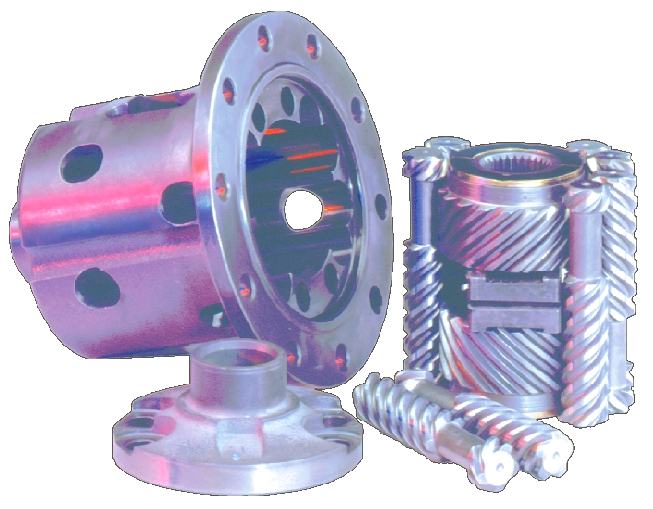LIMITED-SLIP DIFFERENTIALS

This article will not try to explain the mechanics and the workings of a LSD. There are 2 reasons for this.
1) It is not necessary,
2) I have no idea how they work! I think it may be magic.
What I can do though, is discuss the dramatic differences they make to the handling of a car.
Many people confuse limited slip diffs with traction control. This is a long way from the truth. In some situations, LSD increase traction, in others they reduce it.
What they actually do is limit the differnce in the speeds of the two drive shafts (let's say wheels for simplicity).
When you put your foot on the loud peddle, power is sent to the diff. The diff then has to distribute the power to the wheels. In a normal diff, the power is channeled to the path of least resistence (the wheel with the least grip). What a LSD does is limit the amount of power which can be sent to this path.
The most extreme version of a LSD would be a fixed axle. i.e. there would be no difference in the amount of power sent to either wheel. The least extreme would be a completely open diff where ALL of the power is sent to the path of least resistence.
Clear?
What this means in real life is that the car puts down a more even distribution of power to the driven wheels. On a standing start drag race, this is advantageous as when you put your foot down it will not allow one wheel to spin wildly whilst the other just rolls along. Both wheels will be pulling / pushing the car forward.
On a bend however, it is not as straight forward. If you have an open diff on a rear wheel drive car and put your foot down hard on a bend. The inside rear wheel will be the one with the least grip so will receive all of the power. This wheel will then spin causing it to have even less traction than before. This probably won't cause a big deal though because it is the outside rear which is doing all the work anyway and it will probably continue to do its job merrily.
With a LSD though, as you put your foot down, torque is sent to both wheels causing them both to spin and lose traction, almost certainly enducing oversteer.
Now this means that LSDs are a judgement call. You may want lots of power oversteer in your rear wheel drive car, in which case, get a LSD. But in your front wheel drive car, you want lots of off the line traction but don't want terminal understeer every time you put your foot down round a bend.
In AWD cars (particularly in rallying) it is often beneficial to have a tighter diff at the back than the front. This counteracts the understeer characteristics caused by the front wheels being driven and allows more control over the attitude of the car mid bend.
The fact that this is such a judgement call has spurred the clever men in white coats to come up with all sorts of solutions. Computer controlled diffs are now commonplace in rallying allowing the computer to alter the distribution of power on the fly to suit the driver input and road surface.
They'll be nothing left for us to think about soon!! :) |